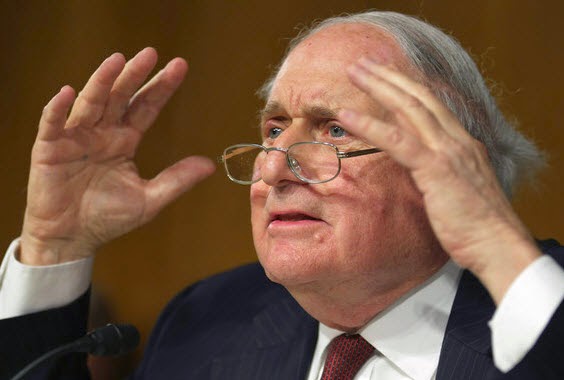the banks did indeed corner and rig the commodity market.
As Bloomberg reports, the Senate panel said the firms have eroded the line separating banking from commercial activities to the detriment of consumers and the financial system. The holdings give banks access to non-public information that could move markets and increase the likelihood that industrial accidents will spur taxpayer bailouts, the report said... (i.e. manipulated the system). The hearing, involving bankers from Goldman, Morgan Stanley, and JPMorgan begins at 930ET...
Full report can be found here (PDF) Selected Excerpts (h/t Manal):
“One focus for the subcommittee is the management of Detroit-area metal warehouses run by Metro Trade Services International, the largest U.S. warehouse company certified to store aluminum warranted by the London Metal Exchange for use in settling trades.Wondering how this has affected the price of aluminum, click here.
Since Goldman bought Metro in 2010, Metro warehouses have accumulated up to 85 percent of the U.S. LME aluminum storage market...
Since Goldman took over the warehouses, the wait to withdraw LME-warranted metal has increased from about 40 days to more than 600 days, reducing aluminum availability and tripling the regional premium for storage and delivery costs...
The investigation revealed a number of previously unknown details about these deals: that Goldman’s warehouse company paid metal owners to engage in “merry-go-round” deals that shuttled metal from building to building without actually shipping aluminum out of Metro’s system; that the deals were approved by Metro’s board, which consisted entirely of Goldman employees; and that a Metro executive raised concerns internally about the appropriateness of such “queue management.”...
Goldman didn’t just store aluminum; it was involved in massive trades of aluminum at the same time its warehouse operations were affecting aluminum availability, storage costs, and prices.
After Goldman bought Metro, it accumulated massive aluminum holdings of its own, and in 2012, added about 300,000 metric tons of its own aluminum to the exit queue at its warehouses.”
“Between 2010 and 2013, Goldman built up its physical aluminum stockpile from less than $100 million in 2009, to more than $3 billion in aluminum in 2012. At one point in 2012, Goldman owned about 1.5 million metric tons of aluminum, worth $3.2 billion, more than 25% of annual North American aluminum consumption at the time…
The Metro system for transporting metal that was part of a merry-go-round deal produced some unusual metal movements.
For example, on October 2, 2013, several trucks were loaded with aluminum at a Metro warehouse on Lafayette Street in Mount Clemens, Michigan, destined for another Metro warehouse about twelve miles away. That same day, several trucks were loaded with aluminum at a third Metro warehouse in New Baltimore, Michigan, and shipped to the Lafayette Street warehouse. The next day, the Lafayette Street warehouse again shipped out several truckloads of aluminum only to be on the receiving end of metal shipments the day after that.
In short, over the space of two days, the Lafayette Street warehouse saw truckloads of virtually identical aluminum shipments depart, arrive, depart, and arrive again...
On another occasion, in November, 2013, Metro loaded aluminum out of one warehouse and moved it into another warehouse about 200 feet away across a parking lot.
Goldman told the Subcommittee that warehouse personnel didn’t know whether the metal was moved across the parking lot on the property to the second warehouse, or instead was driven around the block on public streets. In any event, multiple trucks trundled tons of aluminum from one warehouse location to the other just a few feet away...
On another three-day period in December 2013, pursuant to a merry-go-round deal, trucks carrying tons of aluminum transported that aluminum to and from the exact same warehouses in a circular pattern at odds with rational warehouse activity. The trucks loaded the aluminum from the first warehouse, unloaded it at the second, picked up different lots of aluminum from the second warehouse, and drove it to the first where it was unloaded.
Those trucks bearing similar loads of aluminum did not transport the metal for free, but imposed substantial costs on Metro to carry out the transactions.”
By way of evidence of what happens when you can no longer rig markets...
Goldman Sachs produced $1 billion of revenue from its commodities unit and investments in commodity businesses in 2012, down from $3.4 billion in 2009, according to a Senate Permanent Subcommittee on Investigations report released yesterday on banks’ involvement in those markets.
Morgan Stanley’s commodity revenue fell for four straight years, from $3 billion in 2008 to $912 million in 2012, according to the report.
Click image for live feed
The Hearing involves:
PANEL ONE
CHRISTOPHER WIBBELMAN
President and Chief Executive Officer
Metro International Trade Services LLC
Allen Park, MI
JACQUES GABILLON
Head of the Global Commodities Principal Investments Group
Goldman Sachs & Co.
London, England
PANEL TWO
JORGE VAZQUEZ
Founder and Managing Director
Harbor Aluminum Intelligence Unit, LLC
Austin, TX
NICK MADDEN
Senior Vice President and Chief Supply Chain Officer
Novelis Inc.
Atlanta, GA
PANEL THREE
SIMON GREENSHIELDS
Global Co-Head of Commodities
Morgan Stanley
New York, NY
GREGORY A. AGRAN
Co-Head of Global Commodities Group
Goldman Sachs & Co.
New York, NY
JOHN ANDERSON
Co-Head of Global Commodities
JPMorgan Chase & Co.
New York, NY
Source


No comments:
Post a Comment